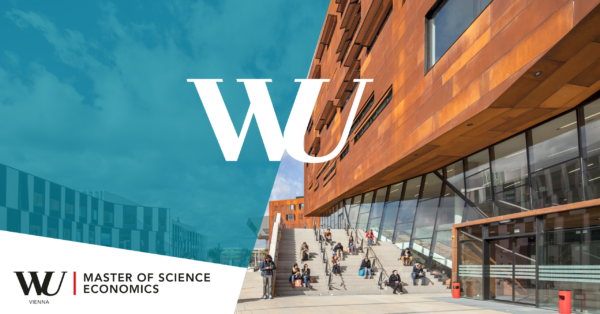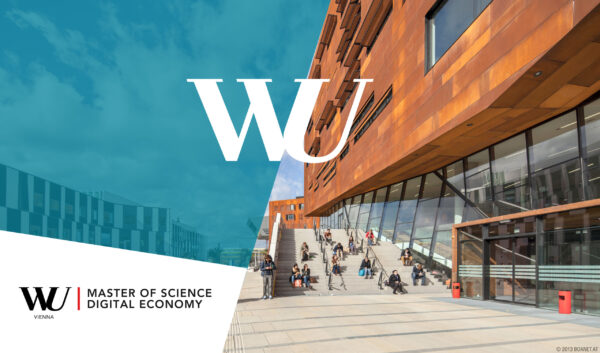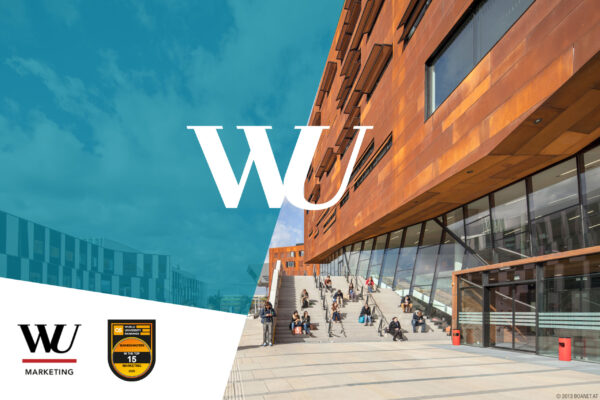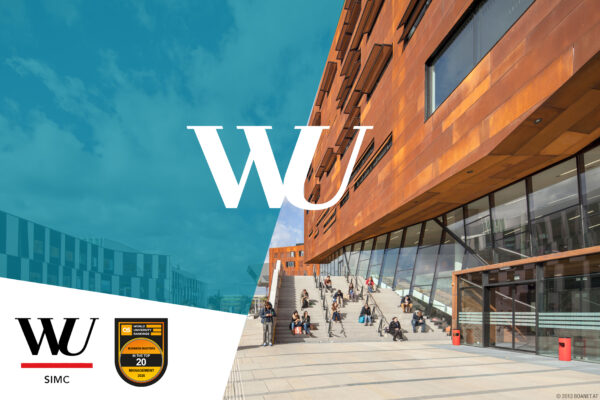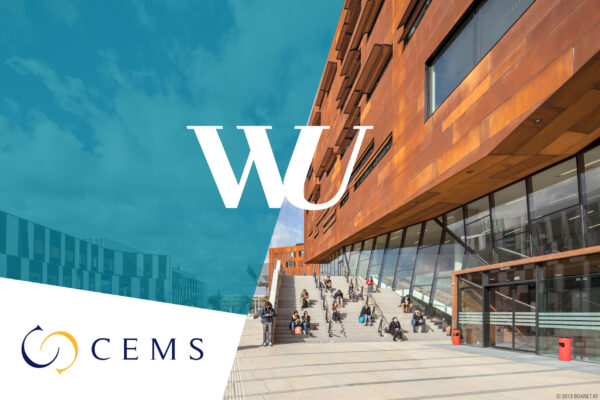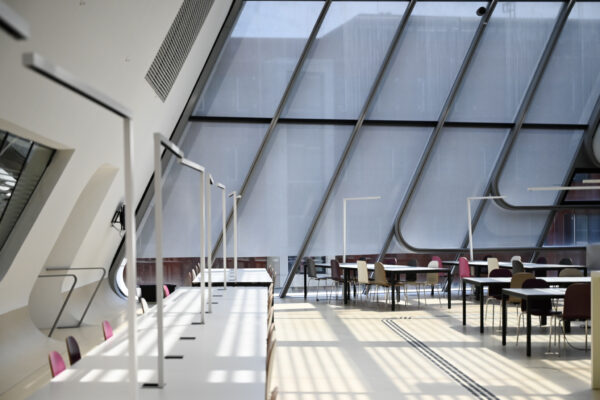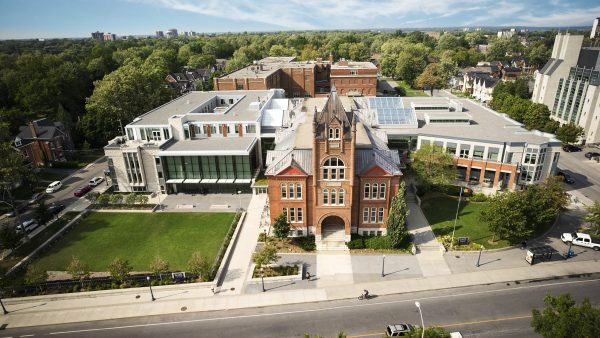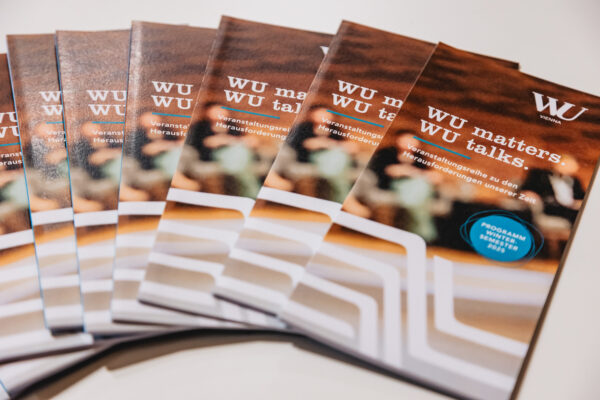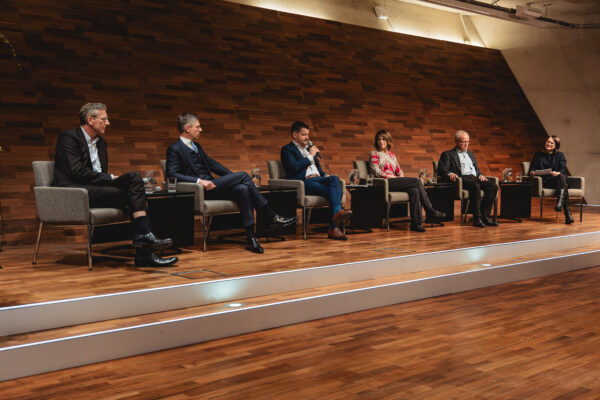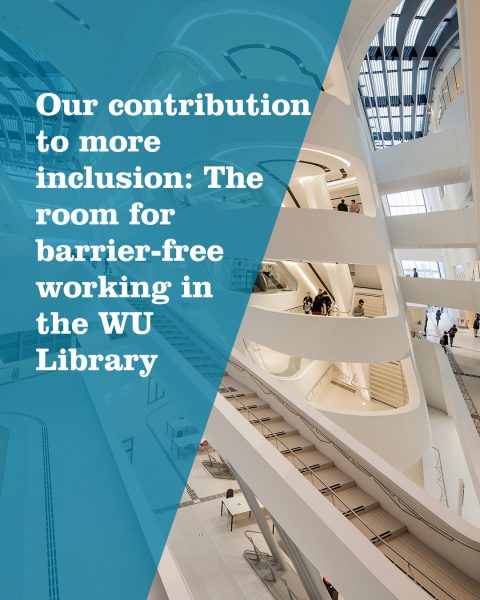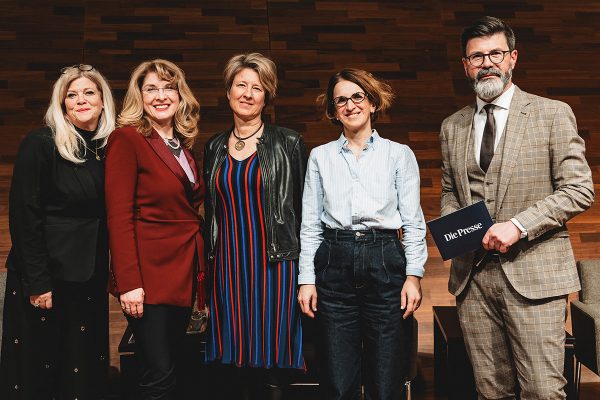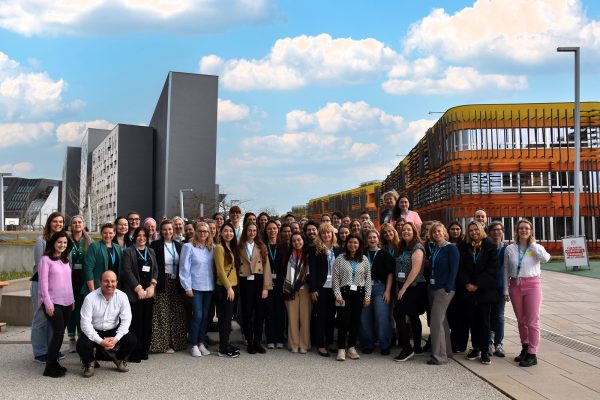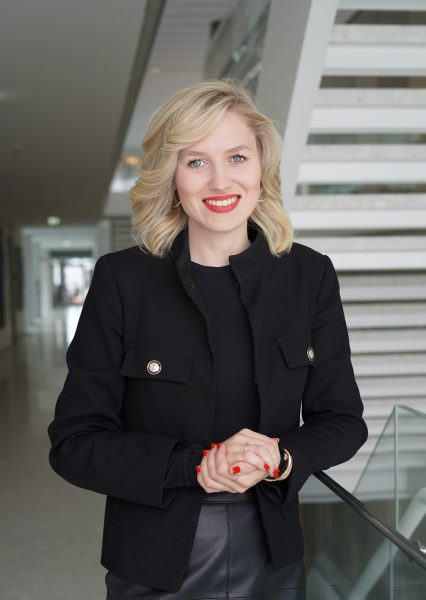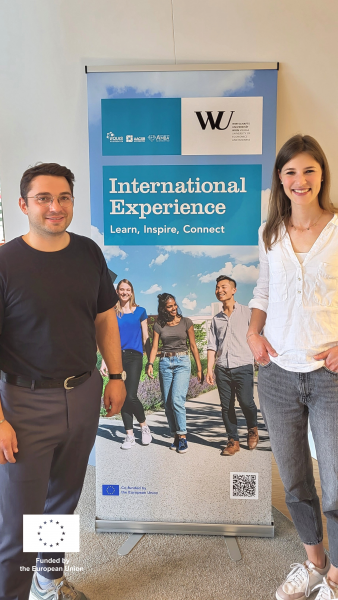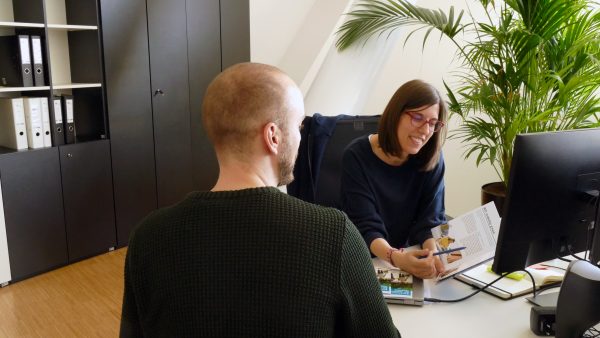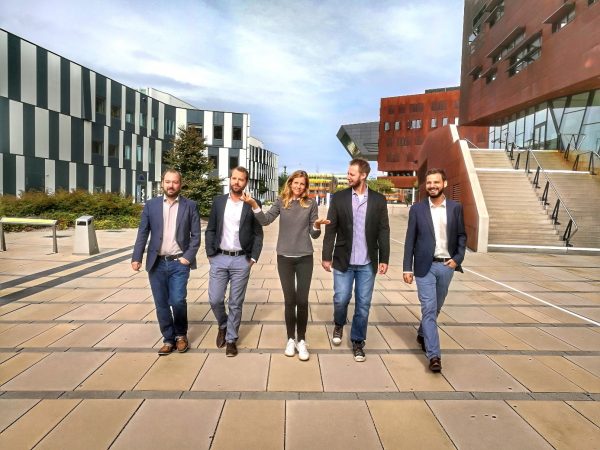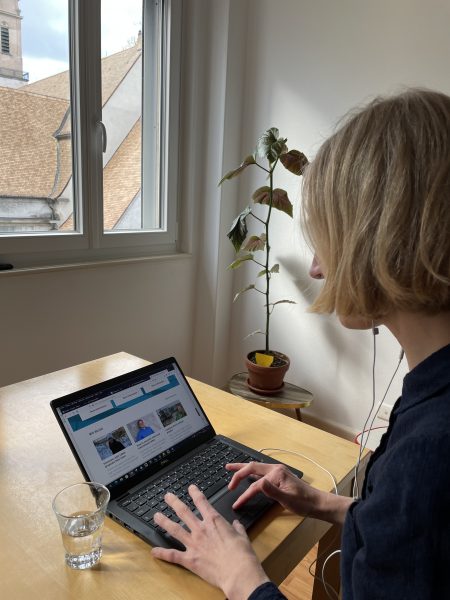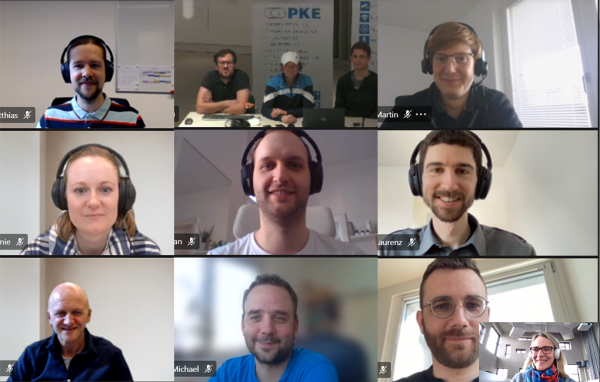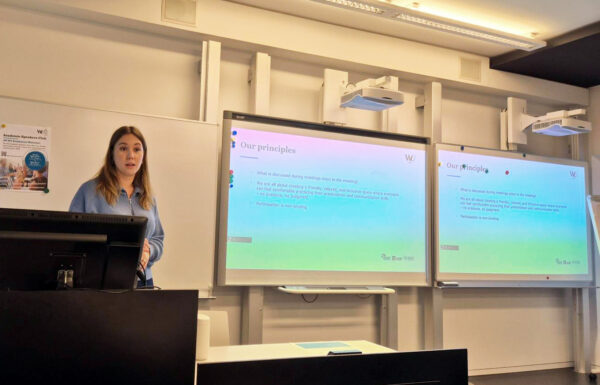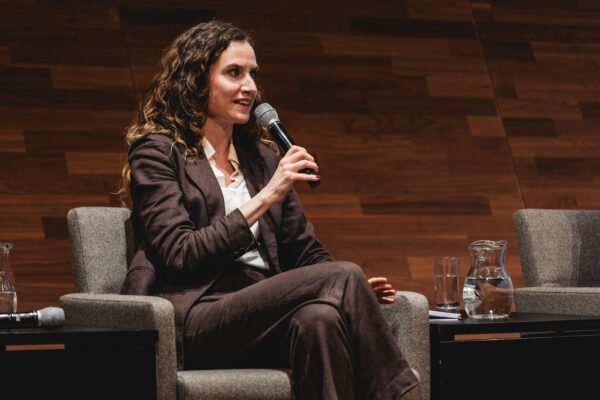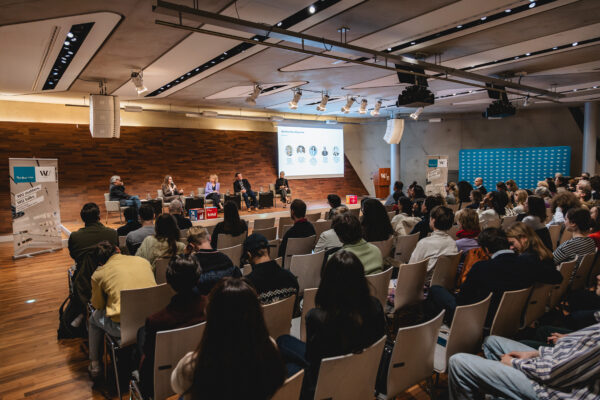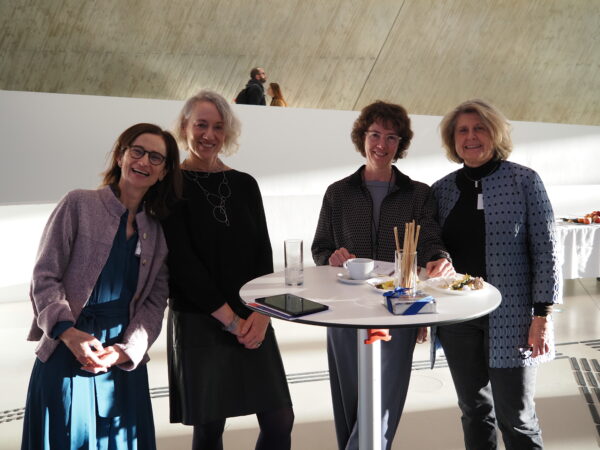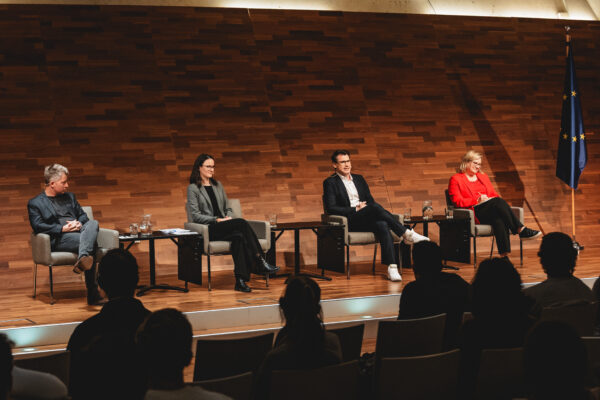Team of the Month 03/21: The WU Executive Academy’s interactive hybrid classrooms team
The EA’s interactive hybrid classrooms team is made up of Stefan Jester from the IT Support Center, together with his team members Michael Schraml, Martin Habermayer, and Matthias Lindtner, the Executive Academy’s IT & eAcademy team led by Monika Kammerer, with team members Daniel Fleckl, Laurenz Ditterstorfer, and Florian Pfeil, and the Events & Reception team led by Stephanie Cech, with her colleagues Evgenia Yurchuk and Lilla Riedl.
Wednesday, March 11, 2020. Four days before the first lockdown came into effect, it was clear: Things had to happen fast. Not only did the entire WU Executive Academy team have to be shifted to teleworking, all the EA’s teaching activities also had to be moved online. “If someone had told me a week earlier that we only had a few days to master this overwhelming challenge involving over 60 employees – I’d have fallen off my chair. But experience teaches us that we often feel like something is impossible until it just has to be done,” says Barbara Stöttinger, Dean of the WU Executive Academy.
Challenge accepted: Digitalizing EA’s programs
Just three weeks later, all of the EA’s programs were moved entirely online. All certificate program modules have been available in distance-learning formats since mid-March 2020, and the various modules of the MBA programs were added in May and June. “My particular thanks go out to my team, our teachers, and our colleagues at WU, who spared no effort to make the impossible possible. People threw themselves wholly into this adventure, trying out different digital tools and helping us master this mammoth task together successfully,” says Stöttinger.
Interactive hybrid classrooms project launched
“Together” is also a key word to describe our March Team of the Month, the WU Executive Academy’s interactive hybrid classrooms team. When activities slowly began to return to campus in May 2020, a WU cross-departmental team set about equipping the first classrooms in the EA building with state-of-the-art IT and interactive multimedia equipment. “Especially for our MBA programs and university certificate programs, we soon saw that it was particularly important for students to be able to return to campus as quickly as possible after the lockdown period. At the same time, it was clear that due to the COVID-19 legal restrictions, including those in place at national borders, it might be possible for most of our students to attend classes on campus, but never for all of them. Also, for the new cohorts starting in October, the prospect of being able to meet face-to-face again – at least at the beginning of the program – was a deciding factor for taking up a continuing education program in spite of the current difficult conditions. That’s why, together with the IT Support Center, we looked at the technical options available for converting selected classrooms in the EA building for true hybrid instruction,” says Stöttinger.
The best of both worlds: Learning together both on- and offline
The aim of the new technology was to make it possible for those students and teachers who were unable to attend classes in Vienna due to COVID-19 travel restrictions to participate in classroom activities interactively. Using MS Teams and Zoom, students were not only able to follow what went on in class in real time, but also to hold their own presentations using microphones and webcams, participate in discussions, and work on group projects together with their fellow students in virtual breakout rooms.
For the teachers in the classroom, the new technology meant that even students who were attending virtually could be actively involved in the course activities. The hybrid technology was also particularly helpful when teachers or guest speakers were unable to travel or come to campus on short notice, as they could still hold their classes via livestream.
Trial by fire passed with flying colors
In the first expansion phase in June 2020, Stefan Jester’s team rapidly equipped four EA classrooms, two on the sixth floor and two on the fifth floor, with special directional microphones and cameras. Together with PKE, the external integrator, all efforts were taken to ensure that the new hybrid technology was integrated as well as possible into the existing classroom infrastructure.
On July 2, 2020, the time had come: In the “Leading People and Organizations” module of the Global Executive MBA, Prof. Günter Stahl taught MBA students simultaneously in the classroom and in front of their screens at home for the first time.
In the second expansion phase, which began during the second lockdown period in November, the PKE team installed additional cameras that automatically showed audio-activated close-ups of the students who were currently speaking. This technology helped participants at home feel almost as if they were sitting in the classroom with their fellow students.
Ready for the future
“Even if online or hybrid learning cannot completely replace face-to-face teaching and learning, we are very happy with what we have achieved together in recent months. The interactive hybrid classrooms project is a great example of how well cross-departmental cooperation can work. And we have nowhere near exhausted the possibilities for interactive learning that hybrid technology can offer for the future: For example, we can now stream guest lecturers who can’t come to Vienna into the classroom, or organize alumni events that the entire community can now attend, no matter where they are in the world. Or even host panel discussions where participants are either online or on site, both on the panel and in the audience,” says Barbara Stöttinger, adding, “The extra mile we went here really paid off. Our students have really shown their appreciation, not only for how quickly we switched to distance teaching but also for how great true hybrid teaching can be. What we’ve achieved here together is not only the necessary foundation to keep teaching in these difficult times, it’s also catapulted us into a new dimension of digitalization at the speed of light – advances we will continue to benefit from for a long time to come.”
Team of the Month
Research and teaching are the key areas of a university’s work, and the most visible. However, the work of the administrative staff is also very important for making sure that a university can operate smoothly and successfully. The members of our administrative staff may not be as highly visible as our researchers, but it’s their commitment that provides our researchers and teaching staff with crucial services like a powerful IT infrastructure, state-of-the-art library services, effective support services for faculty and researchers, tailor-made in-house training programs, or personal support in running the day-to-day operations of an institute – all of this requires careful planning and organization. To bring some of these people into the spotlight, we are naming a Team of the Month 6 times a year to introduce selected members of the administrative personnel and reward them for their important achievements in specific projects.
